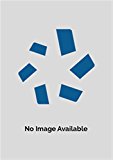Assume that a customer purchase a new car every 5 years, for a total of 10 cars through her lifetime. Let's use Ford as a example. The customer starts out buying a Ford car as her first car. She will keep buying Ford cars as long as she is satisfied with them. However, if she is not satisfied with her current Ford car, she will purchase another brand next time and never return to Ford in her lifetime. Question: What is the expected lifetime profit of a customer who starts out buying a Ford car? Assume that the profit of each car is $4,000, and the probability that the customer will be satisfied with her current Ford car is always 80%. Please use simulation, i.e. using a combination of control flows, to calculate the number. Write a function with the following two inputs: 1) the profit of each car, and 2) the probability that the customer will be satisfied with her current Ford car. The output of the function will be the lifetime profit of a customer given these two inputs. Basically, you will only need to modify your code in Question (1) a bit and wrap everything in a function.
Assume that a customer purchase a new car every 5 years, for a total of 10 cars through her lifetime. Let's use Ford as a example. The customer starts out buying a Ford car as her first car. She will keep buying Ford cars as long as she is satisfied with them. However, if she is not satisfied with her current Ford car, she will purchase another brand next time and never return to Ford in her lifetime. Question: What is the expected lifetime profit of a customer who starts out buying a Ford car? Assume that the profit of each car is $4,000, and the probability that the customer will be satisfied with her current Ford car is always 80%. Please use simulation, i.e. using a combination of control flows, to calculate the number. Write a function with the following two inputs: 1) the profit of each car, and 2) the probability that the customer will be satisfied with her current Ford car. The output of the function will be the lifetime profit of a customer given these two inputs. Basically, you will only need to modify your code in Question (1) a bit and wrap everything in a function.
Operations Research : Applications and Algorithms
4th Edition
ISBN:9780534380588
Author:Wayne L. Winston
Publisher:Wayne L. Winston
Chapter18: Deterministic Dynamic Programming
Section: Chapter Questions
Problem 6RP
Related questions
Question

Transcribed Image Text:Assume that a customer purchase a new car every 5 years, for a total of 10
cars through her lifetime. Let's use Ford as a example. The customer starts
out buying a Ford car as her first car. She will keep buying Ford cars as long
as she is satisfied with them. However, if she is not satisfied with her
current Ford car, she will purchase another brand next time and never
return to Ford in her lifetime.
Question:
What is the expected lifetime profit of a customer
who starts out buying a Ford car? Assume that the profit of each car is
$4,000, and the probability that the customer will be satisfied with her
current Ford car is always 80%. Please use simulation, i.e. using a
combination of control flows, to calculate the number.
Write a function with the following two inputs: 1) the profit of
each car, and 2) the probability that the customer will be satisfied with her
current Ford car. The output of the function will be the lifetime profit of a
customer given these two inputs. Basically, you will only need to modify
your code in Question (1) a bit and wrap everything in a function.
Expert Solution
This question has been solved!
Explore an expertly crafted, step-by-step solution for a thorough understanding of key concepts.
This is a popular solution!
Trending now
This is a popular solution!
Step by step
Solved in 2 steps

Recommended textbooks for you

Operations Research : Applications and Algorithms
Computer Science
ISBN:
9780534380588
Author:
Wayne L. Winston
Publisher:
Brooks Cole

Np Ms Office 365/Excel 2016 I Ntermed
Computer Science
ISBN:
9781337508841
Author:
Carey
Publisher:
Cengage

A Guide to SQL
Computer Science
ISBN:
9781111527273
Author:
Philip J. Pratt
Publisher:
Course Technology Ptr

Operations Research : Applications and Algorithms
Computer Science
ISBN:
9780534380588
Author:
Wayne L. Winston
Publisher:
Brooks Cole

Np Ms Office 365/Excel 2016 I Ntermed
Computer Science
ISBN:
9781337508841
Author:
Carey
Publisher:
Cengage

A Guide to SQL
Computer Science
ISBN:
9781111527273
Author:
Philip J. Pratt
Publisher:
Course Technology Ptr

Fundamentals of Information Systems
Computer Science
ISBN:
9781305082168
Author:
Ralph Stair, George Reynolds
Publisher:
Cengage Learning

Information Technology Project Management
Computer Science
ISBN:
9781337101356
Author:
Kathy Schwalbe
Publisher:
Cengage Learning